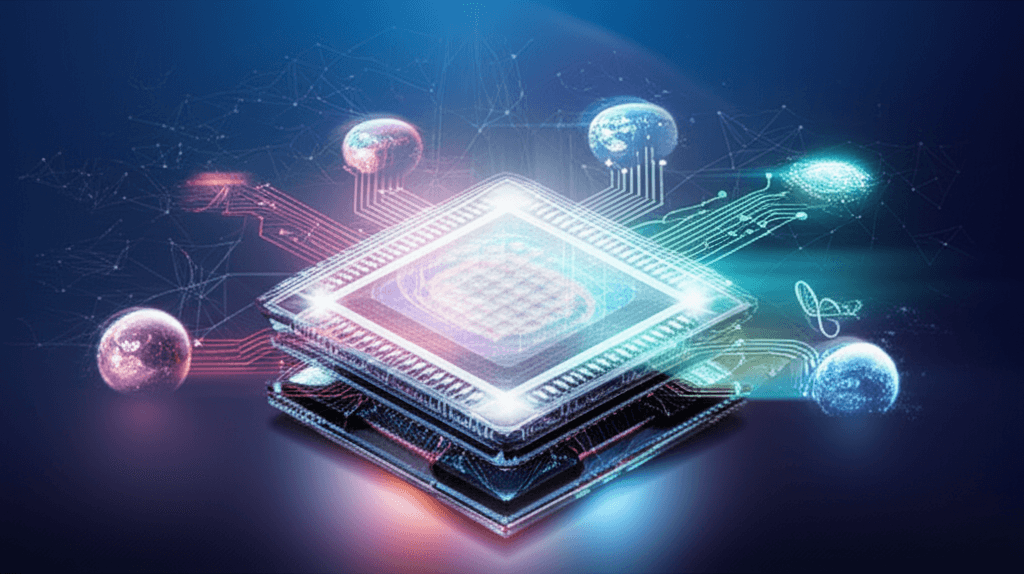JUPITER Launches: Europe's First Exascale AI Supercomputer Revolutionizes Discovery
Europe's first exascale AI factory, JUPITER, unleashes unprecedented computational power for scientific discovery and a sustainable future.
June 10, 2025

A new era of computational power has dawned in Europe with the advent of the JUPITER supercomputer, a system poised to become the continent's first exascale machine, significantly powered by Nvidia technology. Hosted at the Jülich Supercomputing Centre (JSC) in Germany and owned by the EuroHPC Joint Undertaking, JUPITER is engineered to revolutionize scientific discovery by enabling complex AI and traditional simulation workloads at unprecedented speeds.[1][2][3] This development marks a critical step in advancing Europe's capabilities in high-performance computing (HPC) and artificial intelligence, promising to unlock new frontiers in diverse research fields and bolster the continent's technological sovereignty.[1][4][5]
At the heart of JUPITER's exceptional performance lies Nvidia's Grace Hopper platform, specifically nearly 24,000 GH200 Grace Hopper Superchips.[1][2][3] This configuration is anticipated to deliver over 90 exaflops of AI performance and one exaflop for traditional HPC applications, meaning it can perform one quintillion (a "1" followed by 18 zeros) floating-point operations per second in double precision (FP64).[1][2][6][3][7] For AI-specific tasks, which often use lower precision calculations (8-bit), JUPITER is expected to achieve even higher performance, potentially exceeding 70 exaflops.[8][9][10] This immense computational capability will allow researchers to train the largest AI models, including foundational large language models, in significantly reduced timeframes; for instance, training a model with 100 billion parameters could take less than a week.[4][11][12] The system also utilizes Nvidia's Quantum-2 InfiniBand networking platform for high-speed data transfer between nodes and incorporates Nvidia's full stack of software for optimized performance.[1][2][6][3]
The implications of JUPITER's capabilities for the AI industry and scientific research are profound and wide-ranging. The supercomputer is designed to tackle some of the world's most pressing challenges across various domains.[6] In climate and weather modeling, JUPITER will enable high-resolution, real-time environmental simulations and visualizations, leveraging platforms like Nvidia's Earth-2 open platform.[1][2] This will contribute to global initiatives such as the Earth Virtualization Engines project, which aims to create a digital twin of the Earth to better understand and address climate change.[1][2] For biomedical research and drug discovery, JUPITER, utilizing Nvidia's BioNeMo platform, will accelerate the creation and deployment of AI models for pharmaceutical research, streamlining the analysis of complex biological data.[2][3] Furthermore, it will advance quantum computing research through powerful tools like the Nvidia CUDA-Q platform and the cuQuantum software development kit, facilitating hybrid quantum-HPC computations.[1][2] Other targeted application areas include computational engineering, astrophysics, structural biology, sustainable energy system development, and materials science.[1][4][13][12][14] The system is also envisioned as an "AI Factory," a data center specifically designed for AI workloads, allowing users to fine-tune pre-trained AI models and apply them to new tasks through its cloud infrastructure, Jarvis.[2][11]
Beyond its sheer computational prowess, JUPITER is also setting new standards in energy efficiency.[4][12] It is ranked as the most energy-efficient supercomputer among the top five fastest systems globally, achieving over 60 gigaflops per watt.[1][2][4][3][15] This remarkable efficiency is attributed to Eviden's BullSequana XH3000 liquid-cooled architecture and a highly efficient warm water-cooling system.[1][2][4][3][12] The waste heat generated during operation will be repurposed to heat buildings on the Jülich campus, further enhancing its sustainability.[4][16][12] The development system for JUPITER, known as JEDI (JUPITER Exascale Development Instrument), which features the same hardware, topped the Green500 list of the world's most energy-efficient supercomputers, underscoring the commitment to sustainable high-performance computing.[16][17][10] JUPITER's modular design, incorporating a Booster Module with Nvidia GPUs and a Cluster Module featuring conventional CPUs with high memory bandwidth (including future SiPearl Rhea1 ARM processors), is built for versatility and future upgrades, potentially integrating technologies like quantum computing and neuromorphic systems.[4][11][18][14]
The JUPITER project represents a significant collaborative effort and a major investment in Europe's digital future.[1][9] Owned by the EuroHPC Joint Undertaking, it is co-funded by the European Union and national bodies in Germany.[3][12] The system, developed by the Jülich Supercomputing Centre in collaboration with European and international partners like Eviden and ParTec, signifies Europe's ambition to achieve technological sovereignty and remain globally competitive in the rapidly evolving landscape of supercomputing and AI.[1][4][13][9] Access to JUPITER will be provided to researchers and industries across Europe, fostering innovation and enabling breakthroughs that were previously computationally prohibitive.[3][19][15] Competitions like the Gauss AI Compute Competition are already being launched to grant researchers access to JUPITER for training new generative AI models, aiming to maximize societal impact and knowledge transfer.[8] As JUPITER becomes fully operational, it is expected to act as a powerful catalyst for scientific discovery and industrial innovation, propelling foundational research and solidifying Europe's position at the forefront of computational science.[1][2][4]
Sources
[1]
[6]
[8]
[9]
[10]
[11]
[12]
[13]
[14]
[15]
[17]
[18]
[19]